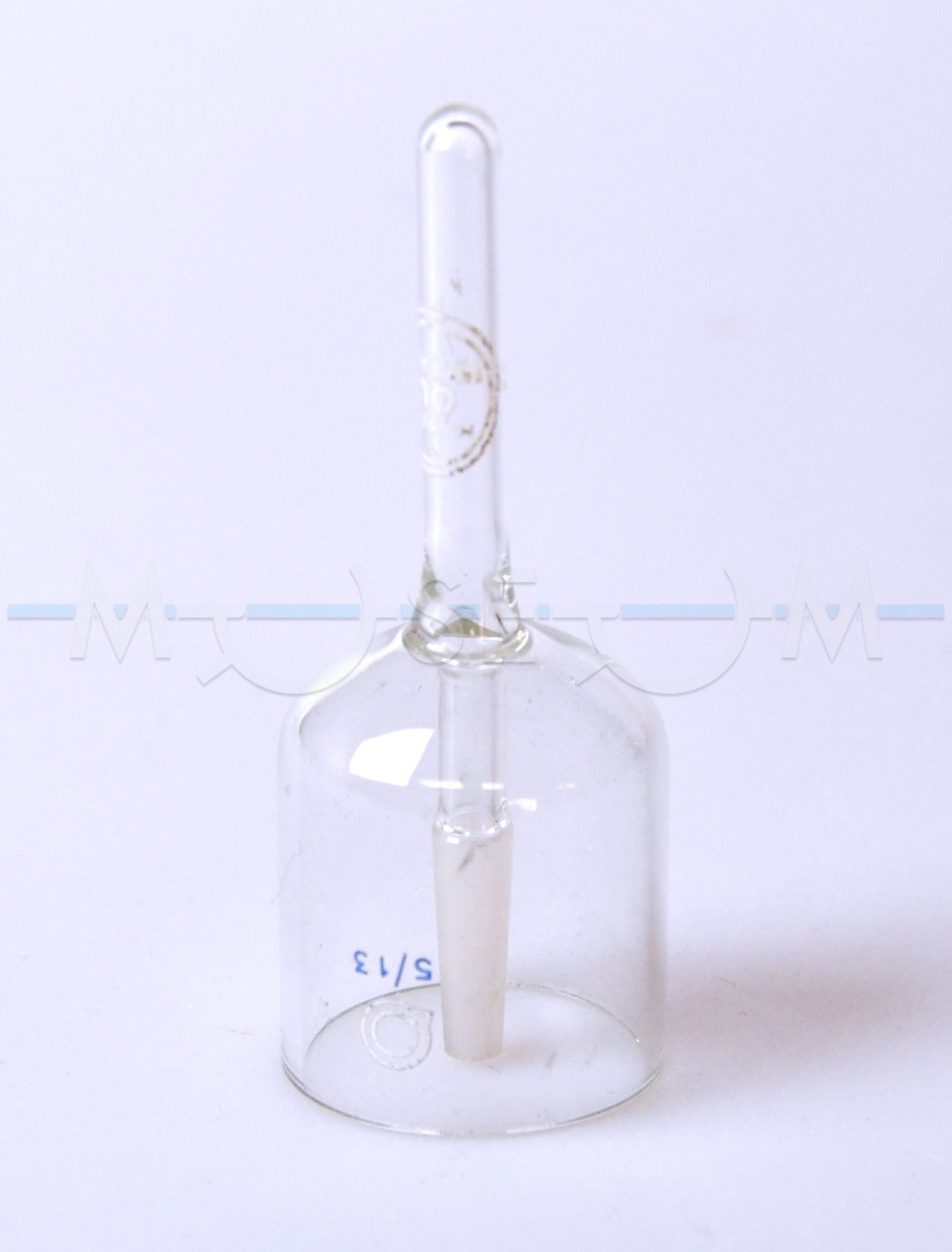Categories of exhibits
Sample tube for AGHIS
Exhibit no. 533
The heated reservoir was one of the first inlets used in mass spectrometry. It consisted of a set of valves and a vessel with a volume of 1000 mL or less, which was heated up to 250 - 350 °C. The reservoir could be evacuated by an auxiliary pump and sampled through an orifice into the ion source. It was conveniently used for pure, sufficiently volatile liquid or solid samples, especially when a continuous signal was needed for tuning or various MS experiments. The heated reservoir inlet allowed many reference mass spectra to be recorded. To reduce the risks of catalytic degradation and adsorption of analyzed compounds on the walls of the reservoir, an all-glass heated inlet system (AGHIS) was developed.
The exhibit is a glass sample tube for AGHIS of MS 920 sector mass spectrometer manufactured by AEI Ltd. in 1969. This AGHIS comprised a one-liter glass flask with a frit leak and seven glass valves, all contained in a metal box that could be heated to 350°C. The entrance to the system was via a 5-mm ground joint. The glass sample tube with the sample in it was closed with a finger and immersed into liquid nitrogen for 20 seconds. Then the sample tube was fitted into the AGHIS ground joint, evacuated by a rotary vacuum and immersed in a small Dewar vessel with liquid nitrogen. The valves were opened to allow the vapors to enter the ion source. The liquid nitrogen cooling was removed and the spectrum was recorded. In case of insufficient vapor pressure, the sample tube as well as the reservoir and the leak frit were heated up to about 250 °C.





